-
Preventing 3D printing hacks

Additive manufacturing (AM), also called 3D printing, is growing fast. Worldwide, the AM market grew nearly 26 percent to more than $5 billion last year, versus 2015, and another 17.4 percent this year versus last. The rapid prototyping market alone is expected to reach $5 billion by 2020. But since the global supply chain for AM requires companies to share computer aided design (CAD) files within the organization or with outside parties via email or cloud, intellectual-property thieves and malefactors have many opportunities to filch a manufacturer’s design files to produce counterfeit parts.
-
-
Mobile phones can reveal exposure to radiation
In accidents or terror attacks which are suspected to involve radioactive substances, it can be difficult to determine whether people nearby have been exposed to radiation. But by analyzing mobile phones and other objects which come in close contact with the body, it is possible to retrieve important information on radiation exposure.
-
-
Water-repelling, long-lasting concrete could make potholes disappear
Water is concrete’s ultimate enemy. Although concrete withstands constant beatings from cars and trucks, water can break it down, pooling on its surface and infiltrating the tiniest cracks. Add freezing and thawing cycles, and it is no wonder roads need frequent repairs. To keep Mother Nature out, researchers have created a water-repelling concrete. The concrete is not only water-repellent – it isdesigned to have a service life of up to 120 years.
-
-
“Spectral fingerprinting” sees through concrete to detect early corrosion
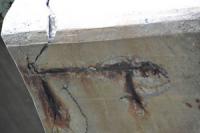
Doctors use X-ray, CT scan, or MRI to determine whether a patient has suffered any internal injuries. Researchers are using the same principle, but in a more powerful form, to detect corrosion, the primary danger threatening the health of the steel framework within the nation’s bridges, roads, and other aging physical infrastructure. What they have developed is a noninvasive “spectral fingerprint” technique that reveals the corrosion of concrete-encased steel before it can cause any significant degradation of the structure it supports.
-
-
Uber picks Dallas, Fort Worth as test cities for flying vehicle network
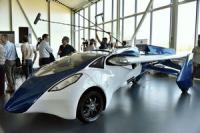
Uber is looking to North Texas as a testing ground for its initiative to make intra-urban flying vehicle rides a reality. The company announced Tuesday that Dallas and Fort Worth are its first U.S. partner cities for what its dubbing the “Uber Elevate Network.” The company hopes to have the first demonstration of how such a network of flying, hailed vehicles would work in three years. The company also tapped a Dallas real estate development firm and Fort Worth’s Bell Helicopter to develop pick-up and drop-off sites for electric vehicles that would take-off and land vertically.
-
-
Timber skyscrapers may soon transform London’s skyline
The use of timber as a structural material in tall buildings is an area of emerging interest for its variety of potential benefits; the most obvious being that it is a renewable resource, unlike prevailing construction methods which use concrete and steel. The research is also investigating other potential benefits, such as reduced costs and improved construction timescales, increased fire resistance, and significant reduction in the overall weight of buildings. London’s first timber skyscraper could be a step closer to reality as city engineers are finalizing their evaluation of a conceptual plans for an 80-storey, 300-meter high wooden building integrated within the Barbican.
-
-
New filtration method makes water safe to drink
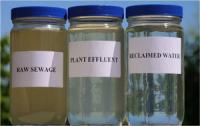
Researchers have created a membrane that removes viruses from treated wastewater and makes it safe for drinking. The new ultrafiltration method does not rely on chlorine, the commonly used chemical to purify water, which can cause contamination.
-
-
Flying car commercially available at a price of 1.2 million Euros

Bratislava, Slovakia-based AeroMobil last week unveiled the new model of the AeroMobil Flying Car at Top Marques Monaco, the world’s leading car show. The flying car offers customers the choice of “all the functionality and flexibility a car and an airplane can provide,” the company says. The flying car can travel in almost any weather conditions, and it has a flying range of about 1,000 km. For added safety, the flying car I equipped with a recovery ballistic parachute technology, which allows the pilot to bring an airborne vehicle back to ground by parachuting, rather than landing. The company says the production of AeroMobil’s first vehicle will be limited to a maximum of 500 units and is priced between 1.2 million and 1.5 million Euros.
-
-
Soil-based scrubber turns deadly chemicals into harmless dirt
A DARPA program that is developing a field-deployable system for onsite neutralization of bulk stores of chemical warfare agents (CWA) has successfully demonstrated a novel waterless soil-scrubbing technology that safely neutralized toxic chemicals simulating sarin, soman, and mustard agents. The technology demonstrated greater than 99.9999 percent removal of the simulants, without creating any hazardous waste by-products.
-
-
Glowing bacteria detect buried landmines, unexploded ordnance
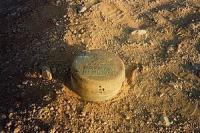
About half a million people around the world are suffering from mine-inflicted injuries, and each year an additional 15 to 20 thousand more people are injured or killed by these devices. More than 100 million such devices are still buried in over seventy countries. The major technical challenge in clearing minefields is detecting the mines. Researchers have developed a potential answer to this urgent need: a novel, functional system combining lasers and bacteria to remotely map the location of buried landmines and unexploded ordnance.
-
-
Hack-resistant hardware
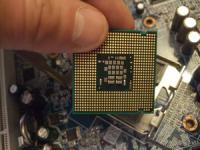
Military and civilian technological systems, from fighter aircraft to networked household appliances, are becoming ever more dependent upon software systems inherently vulnerable to electronic intruders. DARPA has advanced a number of technologies to make software more secure. But what if hardware could be recruited to do a bigger share of that work? That’s the question DARPA’s new System Security Integrated Through Hardware and Firmware (SSITH) program aims to answer.
-
-
Super sponge effectively removes toxins from lakes
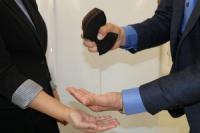
Mercury is very toxic and can cause long-term health damage, but removing it from water is challenging. To address this growing problem. Researchers have created a sponge that can absorb mercury from a polluted water source within seconds. The sponge converts the contamination into a non-toxic complex so it can be disposed of in a landfill after use. The sponge also kills bacterial and fungal microbes.
-
-
Reusable sponge soaks up oil, revolutionizes oil spill, diesel cleanup
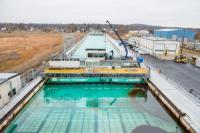
When the Deepwater Horizon drilling pipe blew out seven years ago, beginning the worst oil spill in U.S. history, those in charge of the recovery discovered a new wrinkle: the millions of gallons of oil bubbling from the sea floor weren’t all collecting on the surface where it could be skimmed or burned. Some of it was forming a plume and drifting through the ocean under the surface. Now, scientists have invented a new foam, called Oleo Sponge, that addresses this problem. The material not only easily absorbs oil from water, but is also reusable and can pull dispersed oil from the entire water column—not just the surface.
-
-
Selecting to right first responder technology
With the abundance of tools and technologies available to assist first responders, it is important to address questions such as: How do the tools perform in real-world response situations? Can they withstand uncertain environments? Are they easy to use when a responder is wearing protective gear? How heavy is the technology? Will it weigh down, or fit within the gear of a responder who is already wearing their full kit? To help first responders answer these questions so they can make informed decisions about technology acquisition, DHS Science and Technology Directorate (S&T) First Responders Group (FRG) hosted a 3-day Urban Operational Experimentation (OpEx).
-
-
Study: NIH funding generates large numbers of private-sector patents

Research grants issued by the National Institutes of Health (NIH) contribute to a significant number of private-sector patents in biomedicine, according to a new study. The study, published in the journal Science, examines twenty-seven years of data and finds that 31 percent of NIH grants, which are publicly funded, produce articles that are later cited by patents in the biomedical sector. “The impact on the private sector is a lot more important in magnitude than what we might have thought before,” says one of the researchers.
-
More headlines
The long view
Autonomous Vehicle Technology Vulnerable to Road Object Spoofing and Vanishing Attacks
Researchers have demonstrated the potentially hazardous vulnerabilities associated with the technology called LiDAR, or Light Detection and Ranging, many autonomous vehicles use to navigate streets, roads and highways. The researchers have shown how to use lasers to fool LiDAR into “seeing” objects that are not present and missing those that are – deficiencies that can cause unwarranted and unsafe braking or collisions.
Tantalizing Method to Study Cyberdeterrence
Tantalus is unlike most war games because it is experimental instead of experiential — the immersive game differs by overlapping scientific rigor and quantitative assessment methods with the experimental sciences, and experimental war gaming provides insightful data for real-world cyberattacks.
Prototype Self-Service Screening System Unveiled
TSA and DHS S&T unveiled a prototype checkpoint technology, the self-service screening system, at Harry Reid International Airport (LAS) in Las Vegas, NV. The aim is to provide a near self-sufficient passenger screening process while enabling passengers to directly receive on-person alarm information and allow for the passenger self-resolution of those alarms.
Falling Space Debris: How High Is the Risk I'll Get Hit?
An International Space Station battery fell back to Earth and, luckily, splashed down harmlessly in the Atlantic. Should we have worried? Space debris reenters our atmosphere every week.
Testing Cutting-Edge Counter-Drone Technology
Drones have many positive applications, bad actors can use them for nefarious purposes. Two recent field demonstrations brought government, academia, and industry together to evaluate innovative counter-unmanned aircraft systems.
Strengthening the Grid’s ‘Backbone’ with Hydropower
Argonne-led studies investigate how hydropower could help add more clean energy to the grid, how it generates value as grids add more renewable energy, and how liner technology can improve hydropower efficiency.
The Tech Apocalypse Panic is Driven by AI Boosters, Military Tacticians, and Movies
From popular films like a War Games or The Terminator to a U.S. State Department-commissioned report on the security risk of weaponized AI, there has been a tremendous amount of hand wringing and nervousness about how so-called artificial intelligence might end up destroying the world. There is one easy way to avoid a lot of this and prevent a self-inflicted doomsday: don’t give computers the capability to launch devastating weapons.
The Tech Apocalypse Panic is Driven by AI Boosters, Military Tacticians, and Movies
From popular films like a War Games or The Terminator to a U.S. State Department-commissioned report on the security risk of weaponized AI, there has been a tremendous amount of hand wringing and nervousness about how so-called artificial intelligence might end up destroying the world. There is one easy way to avoid a lot of this and prevent a self-inflicted doomsday: don’t give computers the capability to launch devastating weapons.
